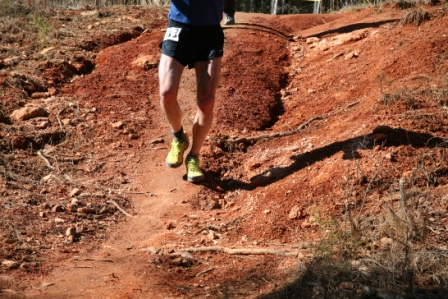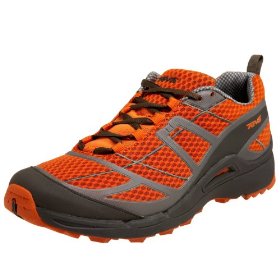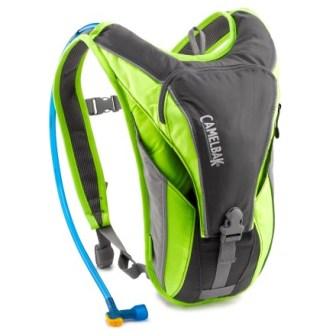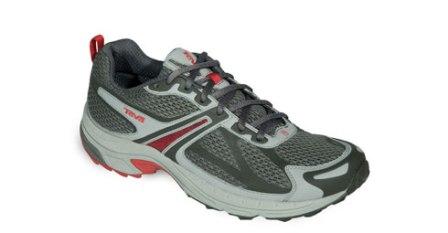Running on Empty Trail Running Book Review
Thursday, April 14th, 2011
 “Running on Empty” is due out today, April 14th and I was able to get a first read, it isn’t a risky investment, it’s well worth the price. If you want a good read, motivating tale, and dreams of running farther and longer than you ever have before, then this is the book for you. It’s one of the most inspiring running books I’ve read in a long time and includes a lot of twist and turns. The focus is on the Run Across America, but the story is all Marshall Ulrich.
“Running on Empty” is due out today, April 14th and I was able to get a first read, it isn’t a risky investment, it’s well worth the price. If you want a good read, motivating tale, and dreams of running farther and longer than you ever have before, then this is the book for you. It’s one of the most inspiring running books I’ve read in a long time and includes a lot of twist and turns. The focus is on the Run Across America, but the story is all Marshall Ulrich.
In 2008, at age 57, Marshall Ulrich set out to break the Guinness Book of World Record of running across the United States. The task is to run from San Francisco City Hall to New York City Hall, using any route, in the fastest time possible. Even though Marshall has a impressive resume he admits that this endeavor was, “…the biggest thing I’d ever done, the hardest, the longest, with the most potential for both injury and enlightenment, my magnum opus.” Here’s a list of Marshall’s previous accomplishments to put that statement into perspective:
- “The Last Great Race” – completed all six hundred-mile trail races in one season, finished in the top ten in five of them, first person to do so
- Badwater 146 – many times, four wins and course records, current record holder for the summit of Mount Whitney
- Pikes Peak Quad – one of the first, and only person to do it twice
- Run across Colorado – three times, current record holder
- Leadville Trail 100 and Pikes Peak Marathon in the same year – only person to do it
- Eco-Challenges – one of only three people to compete in all nine
- Badwater solo, unaided and self-contained crossing – first and only person to do it
- Badwater Quad – first person to do it
- Summit Mount Everest – reached the top of all Seven Summits on first attempts
So as you can see, Marshall was no rookie to running long distances before embarking on this journey, but he wasn’t always a runner. When Marshall’s wife Jean was diagnosed with breast cancer in the 80s, the stress he suffered caused hypertensions and a doctor recommend he try running. Marshall found he had a body built for running long distances and began pushing himself harder and harder. And pushing away his relationships…
“Running on Empty” isn’t just Running Across America with Marshall. It’s about him running away from his life. It’s about what it means to be an ultrarunner. Like Marshall says when referring to his surgically removed toenails done for performance, “Look, the toenails are the least of it. The kind of sacrifices you make when you’re running hundreds of miles are considerably more profound than whether you’ll ever get a proper pedicure again.” He goes on to say, “The real sacrifices? Family relationships often suffer in the ultrarunning community; clearly, mine are no exception.” During the run his personal revelations turned his world upside down. Maybe reading this book will give you some perspective and personal revelations…without having to run all the way across America…
If you’re looking for your next good book and some inspiration to push your body further and further on your runs then pick up a copy of “Running on Empty.” But you don’t have to take my word for it…







 I like “being in the zone” just as much as anyone else, but we all need to challenge ourselves in order to learn and grow. When I am “in the zone” you will usually find me on the basketball court, on the golf course, or maybe even conversing with someone of the opposite sex. If you want to find me “zoning out” just look to my comfortable leather couch and no further. I’m probably watching some pointless reality show; but enjoying it nonetheless. So obviously there are many types of zones to be in but today I am challenging you to get out of a zone; your comfort zone?. Where is your comfort zone? Check somewhere “inside the box.”
I like “being in the zone” just as much as anyone else, but we all need to challenge ourselves in order to learn and grow. When I am “in the zone” you will usually find me on the basketball court, on the golf course, or maybe even conversing with someone of the opposite sex. If you want to find me “zoning out” just look to my comfortable leather couch and no further. I’m probably watching some pointless reality show; but enjoying it nonetheless. So obviously there are many types of zones to be in but today I am challenging you to get out of a zone; your comfort zone?. Where is your comfort zone? Check somewhere “inside the box.”